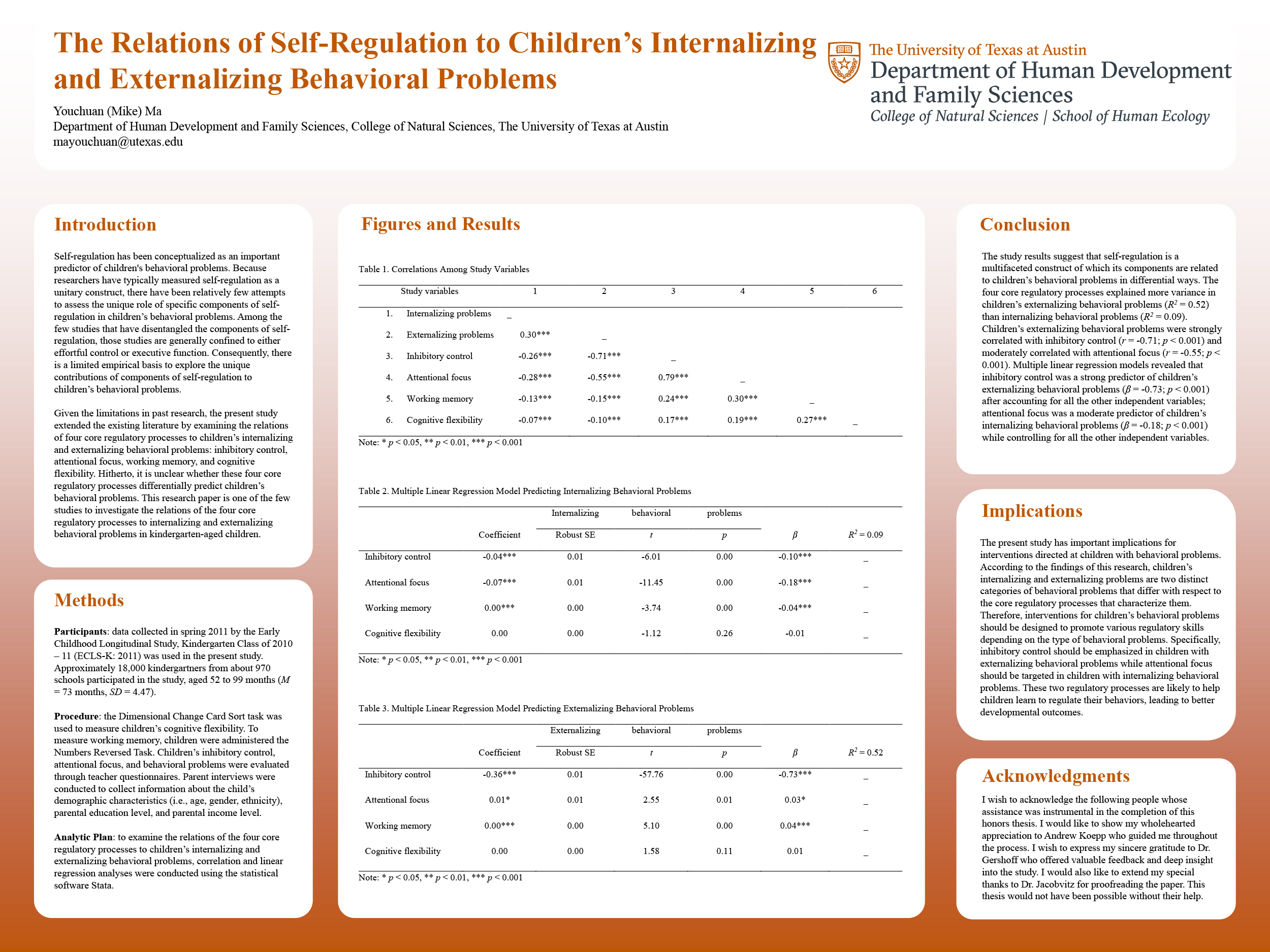Youchuan (Mike) Ma
The present study examined the relations of self-regulation to children’s internalizing and externalizing behavioral problems. The study participants consisted of approximately 18,000 children, aged 52 to 99 months (M = 73 months, SD = 4.47). Children’s self-regulation was measured by four core regulatory processes: inhibitory control, attentional focus, working memory, and cognitive flexibility. Direct child assessments were used to evaluate children’s working memory and cognitive flexibility. Teachers reported children’s inhibitory control and attentional focus, as well as their internalizing and externalizing behavioral problems. Correlation and linear regression analyses were conducted using data collected in spring 2011 by the Early Childhood Longitudinal Study, Kindergarten Class of 2010 – 11 (ECLS-K: 2011). In general, the four core regulatory processes explained more variance in children’s externalizing behavioral problems (R2 = 0.52) than internalizing behavioral problems (R2 = 0.09). Children’s externalizing behavioral problems were strongly associated with inhibitory control (r = -0.71; p < 0.001) and moderately related to attentional focus (r = -0.55; p < 0.001). Multiple linear regression models revealed that inhibitory control was a strong predictor of children’s externalizing behavioral problems (β = -0.73; p < 0.001) while attentional focus was a moderate predictor of children’s internalizing behavioral problems (β = -0.18; p < 0.001). Findings suggest that self-regulation is a multifaceted construct of which its components are related to children’s behavioral problems in differential and predictable ways.

Comments
Very interesting work. As a parent of a four-year-old, I can easily imagine applications of your findings not just for children with behavioral problems, but also for thinking about parenting and behavior in any child. Thank you for sharing! – Jeanette Herman
I don’t know this literature, but from what I understand it sounds like this is a novel approach to self-regulation. Am I correct in thinking that previous research hasn’t really looked at the components that make up self-regulation? If so, this sounds like an important contribution to that literature. – Rob Reichle

